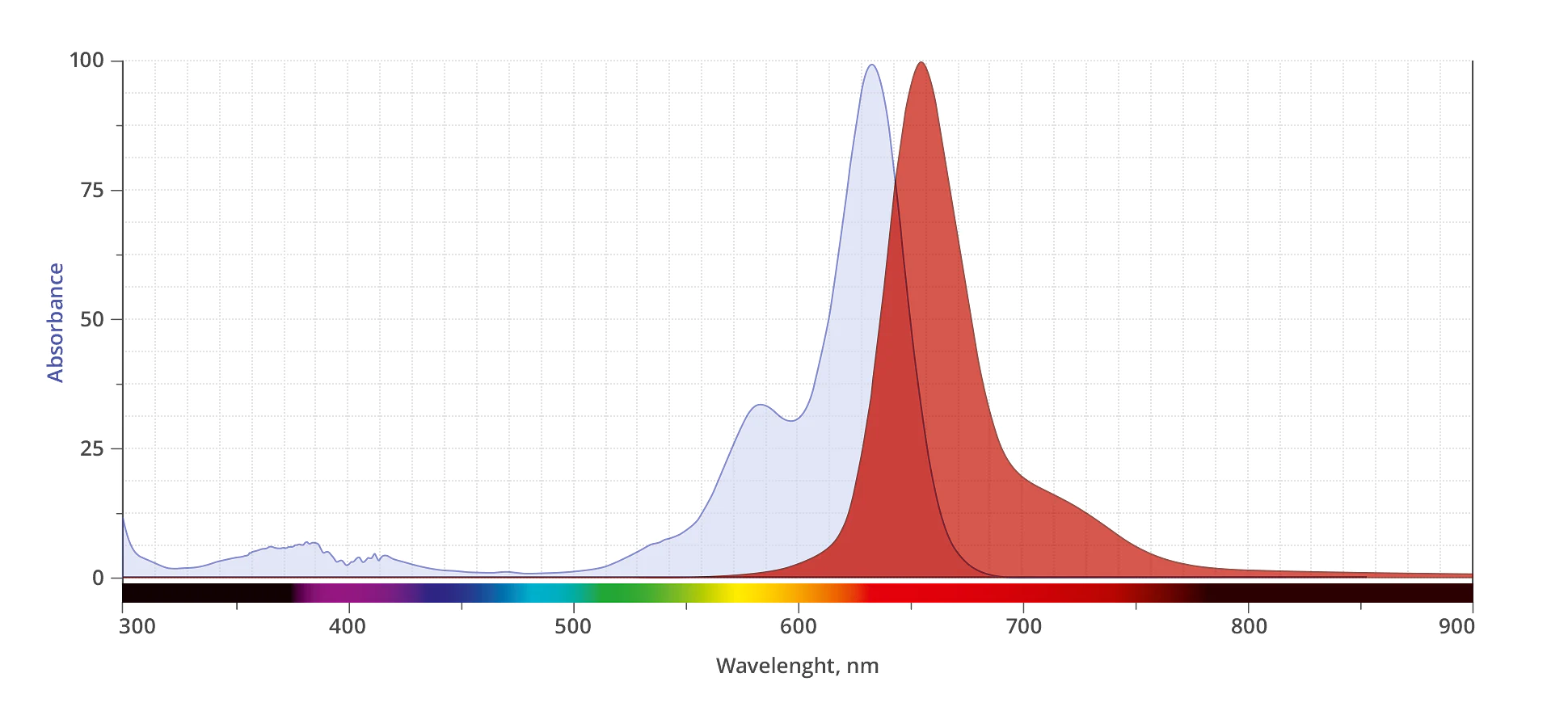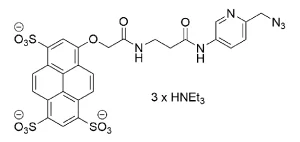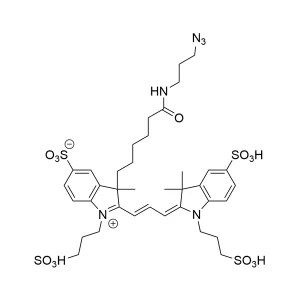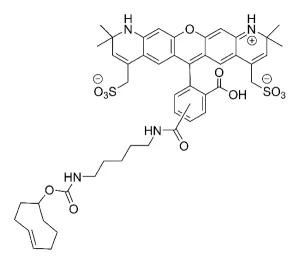Vector Laboratories is closed for the President’s Day on Monday, February 19th. We will be back in the office on Tuesday, February 20th.
We will respond to emails upon our return. Have a wonderful day.
Menu
Vector Laboratories is closed for the President’s Day on Monday, February 19th. We will be back in the office on Tuesday, February 20th.
We will respond to emails upon our return. Have a wonderful day.
AZDye™ 633 Picolyl Azide is an advanced fluorescent probe that incorporates a copper-chelating motif to raise the effective concentration of Cu(I) at the reaction site to boost the efficiency of the CuAAC reaction, resulting in a faster and more biocompatible CuAAC labeling. Up to 40-fold increase of signal intensity, compared to conventional azides, was reported (see Selected References).
AZDye™ 633 Azide is a bright and photostable far-red fluorescent probe with excitation ideally suited to the 633 nm or 635 nm laser excitation source. AZDye™ 633 Azide is water-soluble, pH-insensitive from pH 4 to pH 10. AZDye™ 633 spectrally is almost identical to Alexa Fluor® 633, DyLight® 633 or CF® 633 Dye. Combination of superior brightness and very low autofluorescence background signal in most biological samples in far-red spectral region allows for very sensitive detection of alkyne-labeled biomolecules.
| Unit Size | 1 mg, 5 mg, 25 mg |
|---|---|
| Abs/Em Maxima | 631/651 nm |
| Extinction Coefficient | 100,000 |
| Flow Cytometry Laser Line | 633 nm or 647 nm |
| Microscopy Laser Line | 633 nm or 647 nm |
| Spectrally Similar Dyes | Alexa Fluor® 633, CF® 633 |
| Molecular weight | 1200.26 |
| CAS | N/A |
| Solubility | Water, DMSO, DMF |
| Appearance | Blue solid |
| Storage Conditions | -20°C. Desiccate |
| Shipping Conditions | Ambient temperature |

Applicable patents and legal notices are available at legal notices.




Stay in the Loop. Join Our Online Community
Together we breakthroughTM

©Vector Laboratories, Inc. 2024 All Rights Reserved.
How do I Request a Quote?
To request a quote for products: